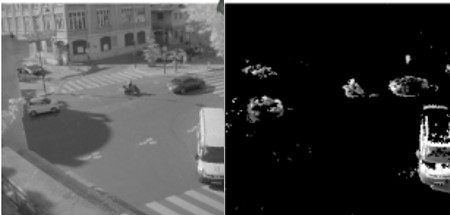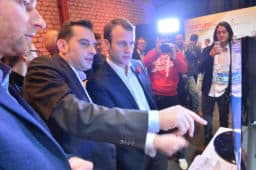
When the limits of physics start to hamper solutions to engineering problem, there are still other fields able to offer exciting new stimuli.
Chronocam CEO and co-founder Luca Verre took some time out to answer our questions on the company’s technology.
Chronocam has a new approach to vision – what is it and what advantages does it have over traditional digital camera systems?
At a high level, Chronocam has taken an approach based on neuromorphic computing and artificial intelligence to develop a vision technology that behaves in a very similar manner as the human eye.
This biologically-inspired breakthrough is delivered as computer vision sensors and systems that significantly improve the performance and power efficiency of traditional computer vision methods.

The technology is known as ‘event based’ (a departure from traditional frame-based methods used in cameras) and mimics the human eye and brain – it is driven by only the relevant events happening in the scene. The technology is unique in its ability to achieve scene-dependent data compression, that can be optimized in real-time, according to varying application requirements.
Image information is not acquired and transmitted frame-wise but continuously, and conditionally only from parts of the scene where there is new visual information.
Intel, Bosch and Renault are all investors. Apart from cash – what else have those relationships brought to you as a technology developer?
Machine vision is an important element in each of these companies’ strategies and through our relationships with them we are able to gain insights into how various systems and markets can utilize the approach we are working on.
They provide, in a sense, a real-world context for implementing our technology in cars, robots, drones, industrial machines, IoT devices and other application spaces.
The new President is making a splash for the French tech and start-up scene, is that helping your business?

It is a good time to be a high tech company in France, for sure. The country is getting a lot of exposure for having a robust tech eco-system and we benefit from that indirectly, both in terms of publicity and credibility.
We have to be a global company in every sense since our customers, partners and investors are located worldwide, but there is certainly a sense of confidence and momentum behind French companies now that can be beneficial.
What industries are you looking at outside automotive?
We look at any product or application that can benefit from enhanced vision capabilities – more human like, higher performing, lower power consumption.
Automotive applications (including ADAS and autonomous) are on top of that list but we are actively exploring drones, robots, industrial automation, virtual and augmented reality, and IoT.
And our roots are actually in helping address vision disabilities in people, so there is potential beyond machines. Anything that can benefit from vision to help make a smarter, safer world is fair game.
You’re recruiting (always good to see!) – apart from technical skills, what sort of attitude are you looking for in new recruits?
In a word, adventurous. We are breaking down walls in terms of the new paradigm we are pushing toward in machine vision and this requires creative out of the box thinkers from people not afraid to question the status quo.
We’re still a small team so everyone can make a direct impact and influence the direction we take.
What does the industry need to do to address consumer concerns about autonomous vehicles?
Everyone is jockeying for position to address the autonomous opportunity and it can be difficult to evaluate all the different technologies and approaches from suppliers. In our space, we feel there is a need to establish a standard way of evaluating machine vision solutions.
This will require approaching the way benchmarking is done from a totally different perspective. For example, by looking at how human eye and brain functions, we are in a good position to break through some of the barriers of conventional computer vision.
Some people tend to think that simply improving technology performance is the way to go. But it’s not just a “speeds and feeds” comparison. We think that looking at how computer vision functions is more relevant. This is also why we are eager to start a conversation about what kind of standards KPIs should be established and how should we benchmark new technology such as event based vision vs. traditional approaches. Those are the questions that engineers should be asking themselves.

Christoph’s conference session will take place on September 20th. The Chronocam team will also be on hand in the exhibition area, demonstrating their imaging technology approach.
A respected researcher and scientist with experience at CERN, multiple patents and 90 peer-reviewed papers, Christoph’s session is sure to be a technical highlight of the upcoming AutoSens conference.






